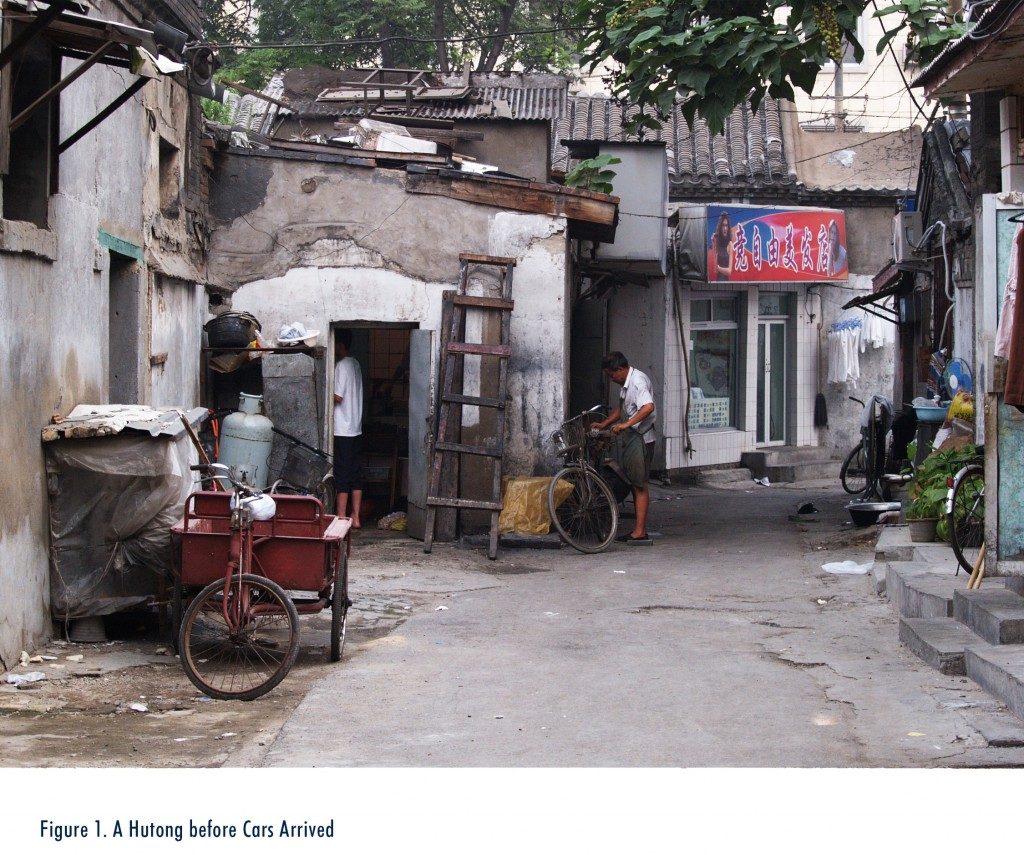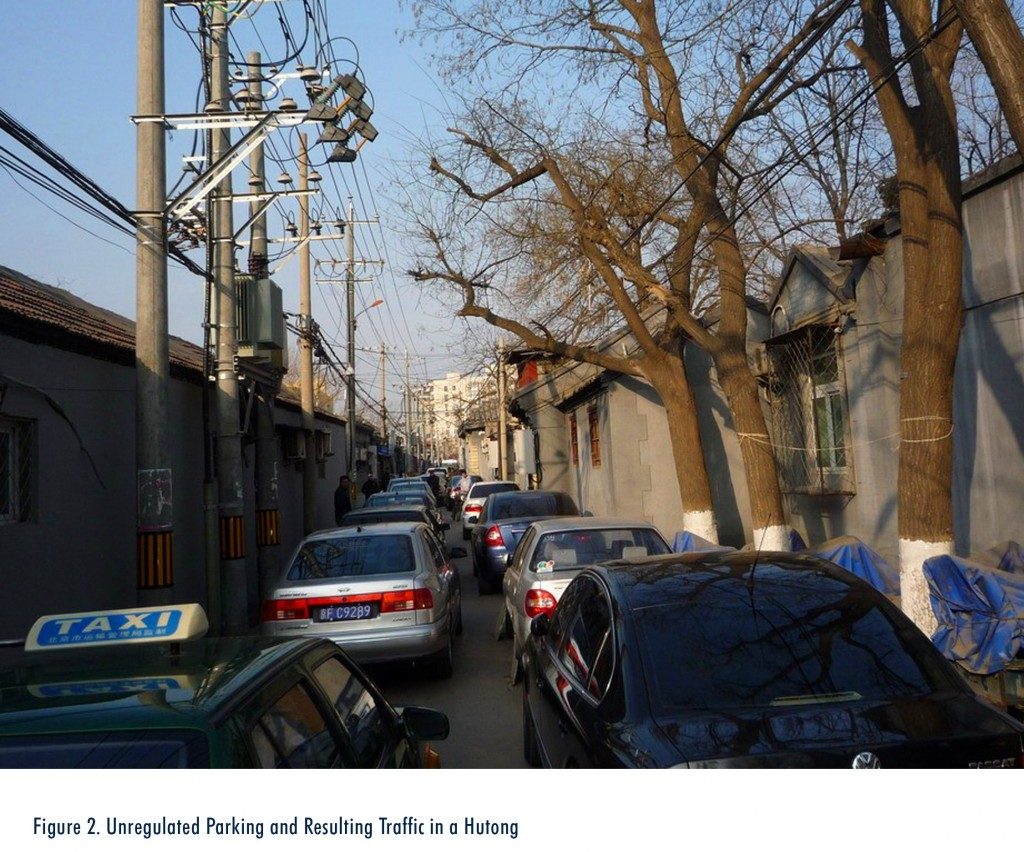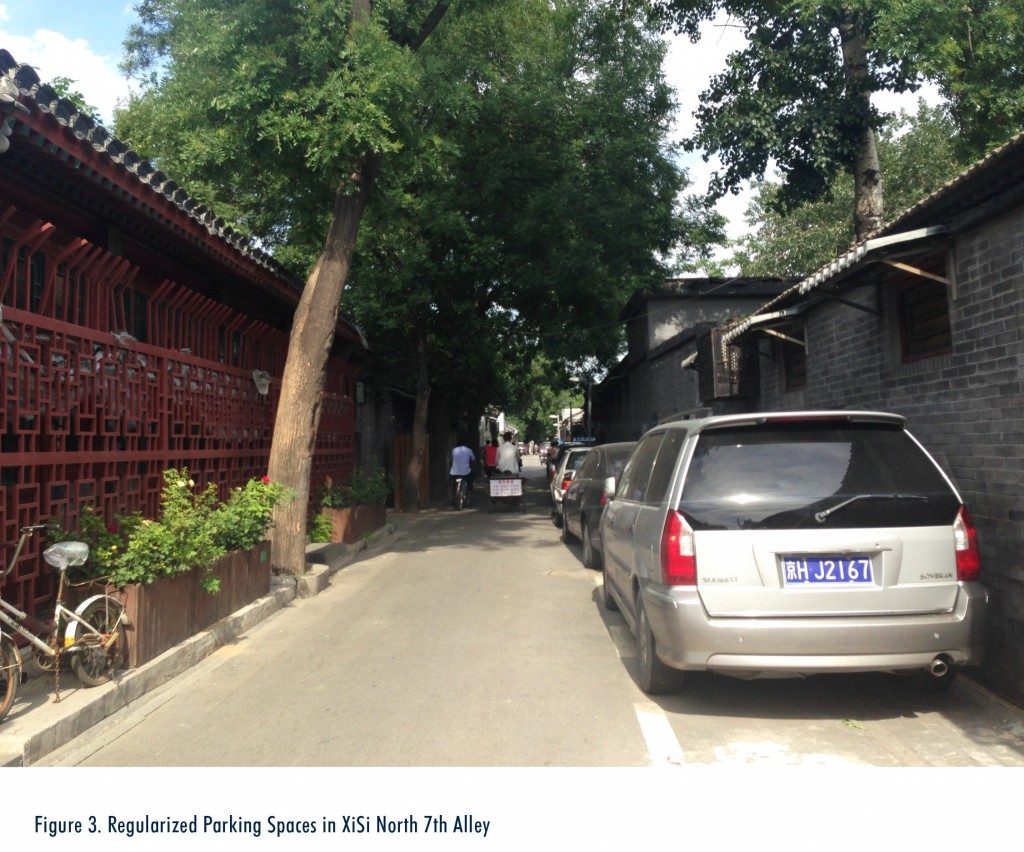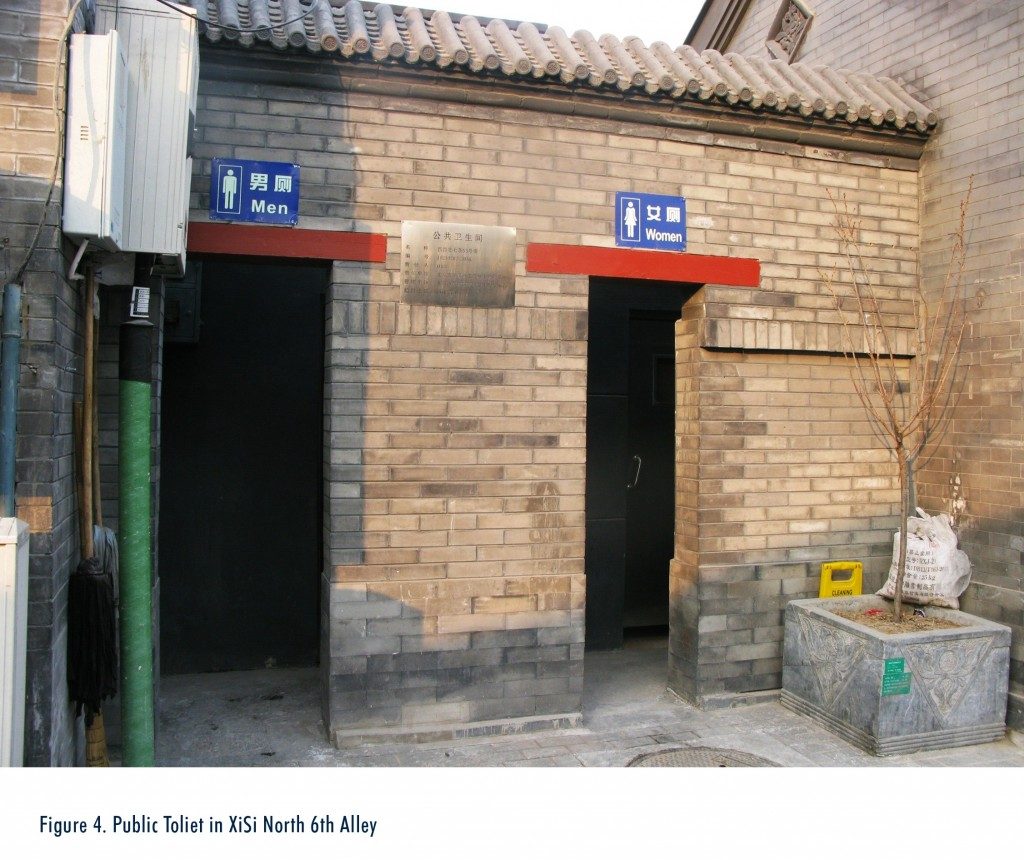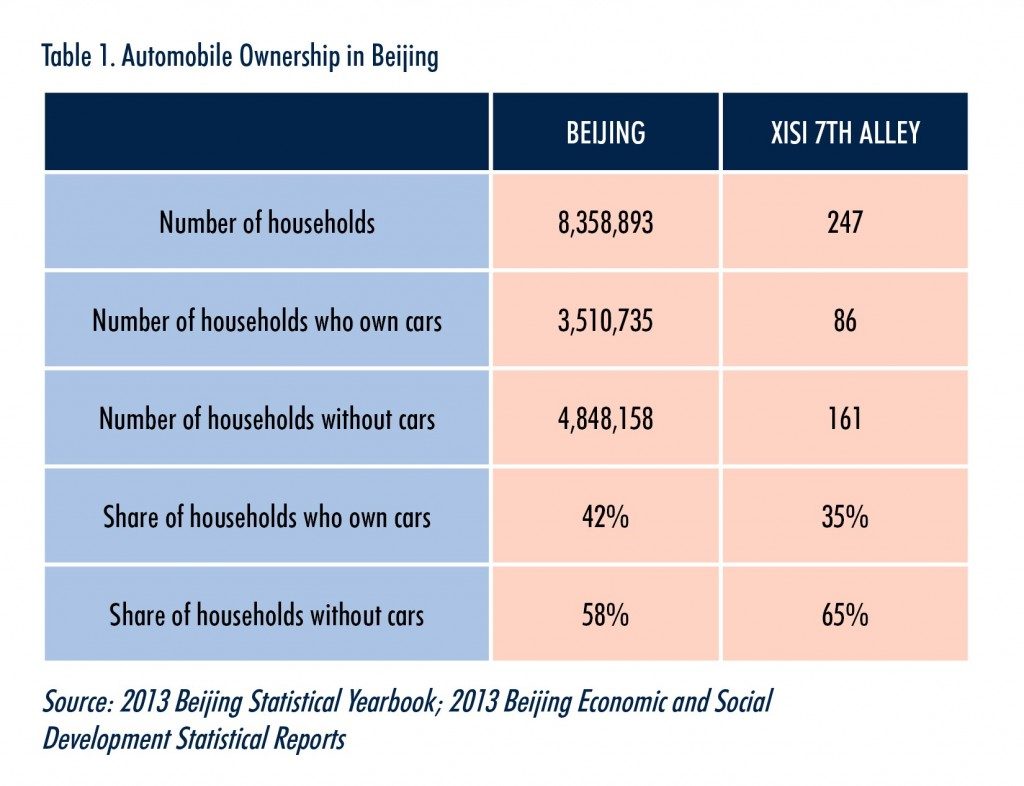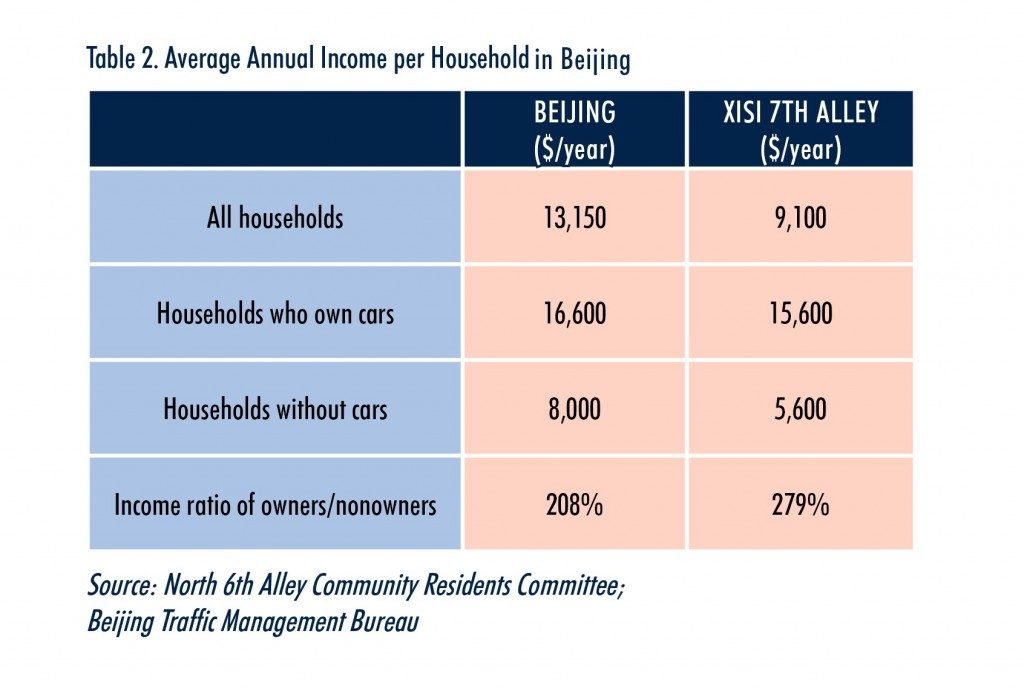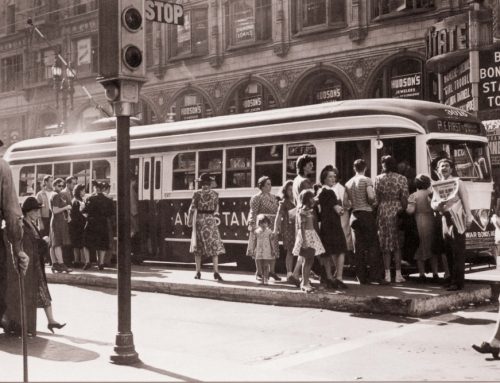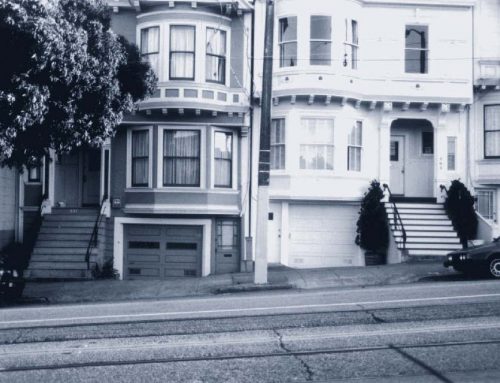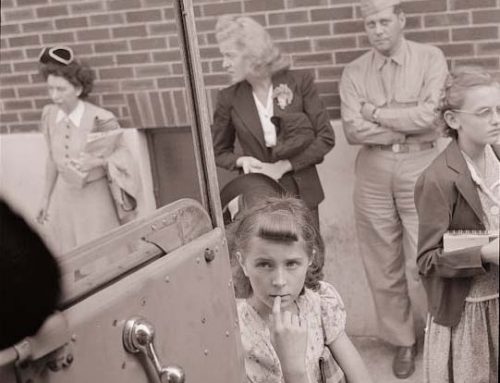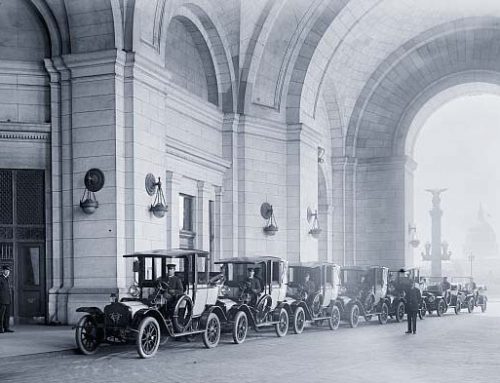Many low-income neighborhoods have two serious problems: overcrowded on-street parking and undersupplied public services. One policy can address both problems: charge for on-street parking to manage demand and use the resulting revenue to finance local public services.
Charging the right price for on-street parking is the best way to manage demand, and the right price is the lowest price that will produce one or two open parking spaces on every block. This is the Goldilocks Principle of parking prices: the price is too high if many spaces are open, and the price is too low if no spaces are open. If one or two spaces are open on each block, drivers can reliably find a curb space at their destination, and the price is just right. Everyone will see that curb parking is both well used (most spaces are occupied) and yet readily available (new arrivals always see a convenient place to park).
New technology has solved the practical problems of charging market prices for curb parking. Meters can charge different prices for parking at different times of day, and occupancy sensors can report the availability of curb spaces in real time. The remaining problems of charging market prices for curb parking are political.
Parking Benefit Districts
To solve the political problems of charging for curb parking, some US cities have formed Parking Benefit Districts (PBDs) that spend the meter revenue to pay for public services in the metered areas. If all the meter revenue disappears into a city’s general fund, few businesses or residents will want to charge for on-street parking. Dedicating the revenue to pay for neighborhood public services, however, can create local support for priced parking. Prices manage the parking and the public services improve the neighborhood. Everyone who lives, works, visits, or owns property in the district can then see the benefits paid for by parking.
Old Pasadena, a historic business district in Pasadena, California, illustrates the potential of PBDs. Parking meter revenue in Old Pasadena helped convert a former commercial skid row into a popular destination. In 1993, the city installed parking meters in Old Pasadena and committed the resulting revenue of more than $1 million a year to rebuild the sidewalks, plant street trees, add historic street furniture, increase police patrols, and provide other public services. Following the example of Pasadena, several other US cities, including Austin, Houston, and San Diego, have committed parking revenue to finance public services on the metered streets.
Will PBDs work in other countries? To help answer this question, we examine the case of a historic neighborhood in Beijing, China. Although our case study focuses on one neighborhood, the findings should be relevant for any neighborhood where: (1) on-street parking is overcrowded; (2) public services are undersupplied; (3) most residents park off-street or do not own a car; and (4) residents who do own a car have higher incomes. Many cities, especially in Asia, Africa, and Latin America, have neighborhoods that fit these four criteria.
Parking Spaces and Public Services in Hutongs
The Chinese word hutong refers to narrow alleys in historic neighborhoods in Beijing, and they are similar to streets in low-income parts of many older cities around the world. Figure 1 shows a hutong before cars arrived.
Regularized Parking
Hutongs are typically between three meters (10 feet) and nine meters (30 feet) wide. Beijing prohibits parking in alleys that are narrower than six meters, and allows parking in wider alleys only in legal spaces that are marked by lines painted on the roadway. Nevertheless, because drivers have nowhere else to park, illegal parking has become a widespread practice tolerated by the authorities (Figure 2).
Many drivers avoid using their cars because parking will be difficult when they return. Some drivers have devised ingenious tricks to preserve their parking spaces when they leave, such as erecting temporary sheds to prevent anyone else from parking. In effect, car owners privatize public land by encroaching on the streets.
The share of cars parked illegally in Beijing has been estimated to be as high as 45 percent. Cars often block traffic and occupy much of the space planned for cyclists and pedestrians. Because so many drivers now park illegally, enforcing the regulations is politically difficult. The best solution may therefore be to regularize and charge for this illegal parking, taking into account urban design, the competing needs of different road users (pedestrians, cyclists, delivery vans, emergency services), and the residents’ demand for parking spaces.
Regularizing informal on-street parking implies marking the boundaries of spaces and assigning rights to their use. This process has two main benefits. First, it makes parking more convenient and reduces the traffic chaos caused by illegal parking. Second, it creates the opportunity to charge for on-street parking and thus produce revenue to improve public services.
Better Public Services
If cities spend the revenue from on-street parking to pay for desired public services, many residents, especially those who park off street or do not own a car, may support charging for parking in their neighborhoods. While most hutongs in Beijing have running water, electricity, and even internet access, many do not have sanitary sewer connections. The residents must therefore use public toilets. Because many alleys have overcrowded parking and unsanitary public toilets, we examine whether charging for on-street parking can yield enough revenue to provide clean public toilets. More convenient parking for drivers and better toilets for everyone may create the popular support necessary to regularize and charge for on-street parking.
If cities spend the revenue from on-street parking to pay for desired public services, many residents, especially those who park off street or do not own a car, may support charging for parking in their neighborhoods.
A Pilot Program
Fortunately, we have an example where Beijing piloted a program to regularize parking and provide public services. Xisi North 7th Alley is a typical hutong with 247 households and about 660 residents. The regularization part of the program aims to prevent illegal parking, remove obstacles used to secure vacant parking spaces, and reserve parking spaces for alley residents (Figure 3).
The pilot program also improves public services. Government employees clean the public toilets (Figure 4). Surveillance cameras and 24-hour patrol officers increase security. Private firms provide other services, including street cleaning, trash collection, and landscape maintenance.
Financial Analysis
Capital and Operating Costs
Parking is free in the pilot program and a subsidy from the subdistrict government pays to provide the public services. We can, however, estimate whether parking charges could replace the subsidy for the pilot program. The capital costs for 7th Alley, which were mainly for sanitation, landscaping, and parking regularization, totaled about $62,000 (¥380,000). The operating costs, which are mainly for the salaries of toilet cleaners, trash collectors, and patrol officers, are about $24,600 (¥150,000) a year.
Other neighborhoods with chaotic parking and poor public services would like to see similar improvements, but government subsidies are not available to replicate the pilot program everywhere. Can charging market prices for on-street parking yield enough revenue to finance the capital and operating costs of similar programs in other neighborhoods? To answer this question, we examine the potential parking revenue in 7th Alley.
Revenue from On-Street Parking
Cities can use several non-price ways to distribute parking permits among residents (for example, by lottery), but charging for the permits is the only way to produce revenue to pay for public services. Auctioning the permits is the simplest way to discover the price that will equate the supply and demand for parking in a neighborhood. Beijing auctions land for residential, commercial, and office uses, and Shanghai auctions license plates. Therefore, auctions for parking permits have well-established precedents.
Uniform-price auctions are often used when selling a large number of identical items. Consider how a uniform-price auction could allocate the permits in 7th Alley, which has 52 parking spaces. Suppose each resident can submit a bid for one permit. After the bids are ranked in descending order, the highest 52 bidders receive permits. All the winning bidders then pay the same price: the lowest accepted bid. All but the lowest winning bidder thus pay less than what they actually bid. Uniform-price auctions encourage people to bid the highest price they are willing to pay because the high bidders do not risk paying more than the lowest accepted bid. Your bid determines whether you receive a permit but not what you pay for it.
The auction prices for on-street parking will presumably relate to the market price of nearby off-street parking. For example, if residents can rent parking in a nearby garage, that price could put a ceiling on what residents are willing to bid for a permit to park in the alley. Because the prices in the nearest garages are around $80 a month, this seems a reasonable estimate for the auction value of the 52 parking spaces in 7th Alley. If the auction price is $80 a month, the 52 permits will yield total annual revenue of about $50,000 ($80 x 52 permits x 12 months) to pay for added public services.
Although $80 a month may seem a lot to charge for a permit to park on the street, car owners will receive guaranteed parking spaces, which are valuable assets where parking had previously been a big problem. Because the parking revenue will pay for public services, the combination of guaranteed parking and the new public services may entice even residents who park on the street to support market-priced parking. If most residents park off street or do not own a car, they can provide strong political support for PBDs.
The Payback Period
At a price of $80 per space per month, the potential parking revenue in 7th Alley is about $50,000 a year, which is double the program’s operating cost of $25,000 a year. Because the net operating revenue is about $25,000 a year ($50,000 ̶ $25,000) and the capital cost was about $62,000, the payback period for the capital investment is 2.5 years ($62,000 ÷ $25,000). In this case, the parking revenue should more than cover the operating costs and quickly repay the capital costs of the alley improvements. This result suggests that the program can be self-financing and is replicable in other neighborhoods.
Political Prospects of Residential Parking Benefit Districts
Residential parking permits are usually free or cheap because influential car owners resist paying a market price to park in front of their own homes. Residential Parking Benefit Districts resemble conventional Residential Parking Permit Districts but differ in three key ways. First, drivers pay market prices for the permits. Second, the number of permits is limited to the number of curb spaces. Third, the permit revenue pays for neighborhood public services. In neighborhoods where most residents park off street or do not own a car, the desire for better public services can outweigh the desire to park free on the street.
Residential Parking Benefit Districts resemble conventional Residential Parking Permit Districts but differ in three key ways. First, drivers pay market prices for the permits. Second, the number of permits is limited to the number of curb spaces. Third, the permit revenue pays for neighborhood public services.
To examine the political feasibility of charging for parking to finance public services, we examined the demographics of people and cars in 7th Alley (Table 1). Only 35 percent of households own a car. The other 65 percent who are carless will receive better public services without paying anything, and they outnumber the car owners almost 2-to-1. If the carless majority prefers public services to free parking, a PBD may be politically feasible.
Equity in Residential Parking Benefit Districts
A lottery that gives every household an equal chance to win a parking space might seem fairer than an auction. A lottery, however, would not provide any revenue to pay for public services. A lottery would instead give valuable land to a few lucky car owners and nothing to everyone else. Randomly giving free parking to a few car owners and nothing to many more people who cannot afford a car is hardly fair.
If charging for parking can earn $50,000 a year to pay for public services, free parking subsidizes car ownership by $50,000 a year. Is providing free parking for 52 cars more important than providing better public services for the 660 people living in the alley? If the city were already charging market prices for parking and spending $50,000 a year to provide extra public services, few would argue that the city should remove the public services to provide free parking.
Parking Benefit Districts are bottom-up governance, not top-down regulation. But will charging for parking place an unfair burden on lower-income residents? In Beijing, car-owning households have more than twice the income of carless households (Table 2). In 7th Alley, they have almost three times the income of carless households. Charging for parking and spending the revenue for public services will therefore transfer income from richer to poorer households. Because richer households who park their private cars on public land will finance public services not only for themselves but also for many poorer people, it is hard to argue that charging market prices for on-street parking will be unfair.
When both equity and efficiency are considered, PBDs should be most appropriate where car owners have higher incomes and most residents do not own a car, so the poorer, carless majority will receive public benefits at no personal cost.
Parking Benefit Districts can efficiently manage on-street parking and equitably financed public services, but do they privatize public land? The government owns the land, charges market prices for parking on it, and spends the revenue to provide public services. Parking Benefit Districts thus resemble market socialism, not privatization.
Conclusion: Turning Problems into Opportunities
Streets belong to the community and PBDs can monetize on-street parking to pay for community benefits. Our case study of a pilot program in Beijing found that on-street parking can finance important public investments with a payback period of fewer than three years. Most households do not own a car, and the car-owning households’ average income is almost three times that of carless households. PBDs will therefore transfer income from richer drivers to poorer nondrivers, while rich and poor alike will benefit from regulated parking and better public services.
Parking Benefit Districts are most appropriate in dense neighborhoods where: 1) on-street parking is overcrowded; 2) public services are undersupplied; 3) most residents park off street or do not own a car; and 4) residents who do own a car have higher incomes. Where these criteria are met, any city should be able to offer a pilot program to charge for parking and use the revenue to finance public services. If residents don’t like the results, the city can cancel the program. If residents do like the results, however, the city can offer this self-financing program to other neighborhoods. Because neighborhoods will have money to spend and decisions to make, residents will gain a new voice in governing their communities. Residential Parking Benefit Districts may turn out to be a fair, efficient, and politically feasible way to improve cities, transportation, the economy, and the environment, one parking space at a time.
This article adapted from “Charging for Parking to Finance Public Services,” published in Journal of Planning Education and Research, 37(2), June, 136–149.


